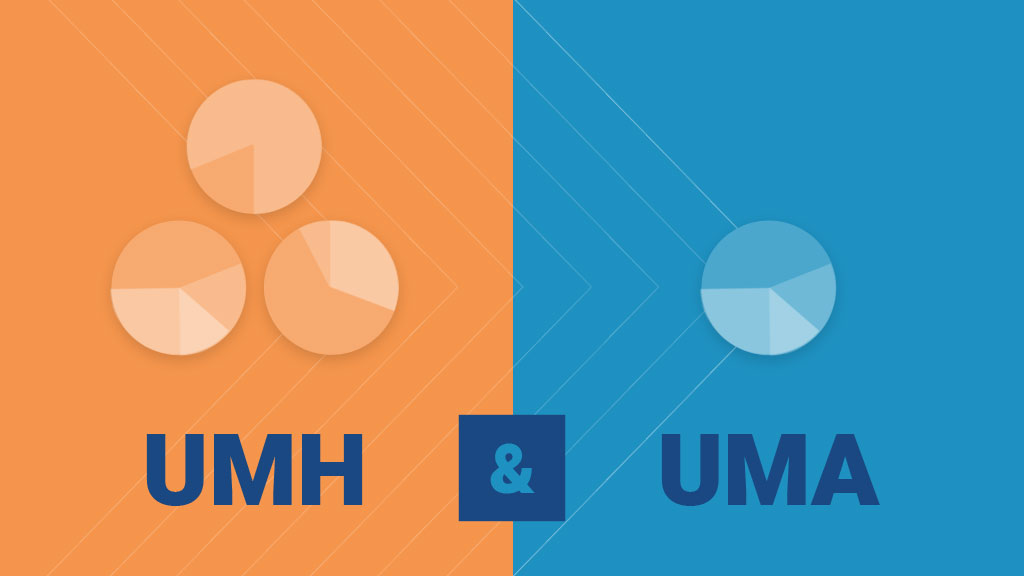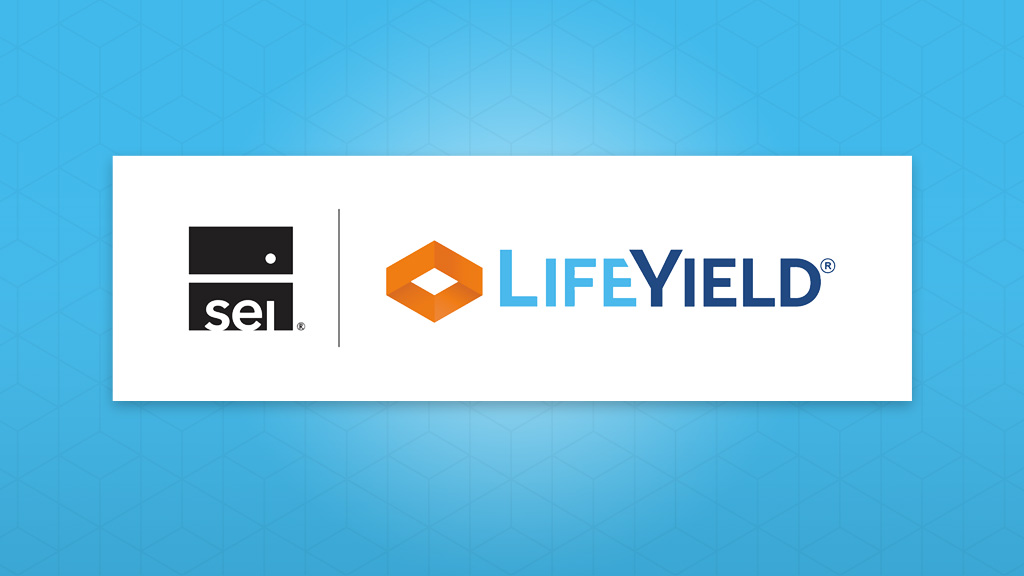What Is a Unified Managed Household — and How Does It Relate to a Unified Managed Account?

Whether you watched Sesame Street as a kid, a parent, a babysitter, or a wannabe kid, you’ve probably got the program’s songs and ditties locked in eternity in your head. So, the song “One of These Things (Is Not Like the Others)” comes to mind when talking about the unified managed household (UMH) and a unified managed account (UMA).
Because neither of those things is just like the other.
The unified managed account was developed in large part to suit investors with high net worth and a thirst for personalized wealth management that was on par with that enjoyed by institutional investors. Financial advisors (and their clients) like how a UMA allows them to create a diverse portfolio suited to each client’s goals and risk tolerance, mindful of maximizing returns while managing for optimal tax efficiency.
A unified managed household refers not to one account but to the entire portfolio of accounts owned by a client plus members of their household with whom they share financial goals and, in most cases, tax filing status. UMH describes an approach of taking a 365-degree view of a client’s household’s accounts and investments and managing them to create the best possible returns at the lowest cost and greatest tax efficiency.
And here’s the rub: a UMH approach encircles and manages all the accounts held by members of the client household. Those accounts can include a UMA (or not, since a UMA is not appropriate for all investors) – and all the other accounts the household has.
Let’s talk in more detail about UMAs and the UMH to answer your questions and help you better serve your clients. And the place to start is with the foundation – different types of accounts that are available to investors.
Different Accounts for Financial Investments
Different accounts are available for people to save and invest their money. Clients choose a financial advisor in part to help them decide what types of accounts are best to meet their short- and long-term needs. The financial advisor starts with these account options for building blocks:
Taxable Accounts
These are traditional types of brokerage accounts that hold an array of securities, including stocks, bonds, mutual funds, and exchange-traded funds. Investors pay taxes on dividends or interest earned from their investment as well as capital gains taxes when investments are sold at a profit.
Tax-Deferred Accounts
Examples of tax-deferred accounts are 401(k) accounts and various types of individual retirement accounts (IRAs). Investors may defer taxes on the money they invest through these accounts (if they follow the government’s rules for how much they can invest and when they can take withdrawals). Generally, investors pay ordinary income on money when they withdraw funds from these accounts.
Tax-Exempt Accounts
Holders of tax-exempt accounts need to pay taxes upfront on the money they invest, but they can avoid future taxes on the accounts by following the government’s rules. Examples of tax-exempt accounts include Roth 401(k) accounts and Roth IRAs.
Health savings accounts (HSAs) are an outlier in the tax-exempt account category. Investors who open HSAs (and there are eligible rules) do not pay taxes on the money they invest, the earnings and interest of the accounts, or on their withdrawals if the latter are used to pay or reimburse qualified medical expenses.
Enter Asset Location in the Quest for Tax Efficiency
There is one more cornerstone in the discussion of UMAs and UMH, and it is a process called asset location. It works like this:
When financial advisors recommend investments for taxable, tax-deferred, and tax-exempt accounts, they take care to align investments to the accounts’ tax treatment. This way they seek to maximize return and minimize taxes by sorting investments among different types of accounts for the best potential tax treatment, or tax efficiency. That describes asset location.
As an example: Financial advisors will generally not recommend that clients purchase and place investments for which returns aren’t taxable – such as municipal bonds – into tax-deferred or tax-exempt accounts that already have tax protection. It’s like opening an umbrella when you’re already wearing a hooded rain slicker. You just need one to keep you dry.
In another example, consider the case of an investor in stocks or mutual funds that generate short-term capital gains resulting from sales of assets held for less than one year. The tax rates on short-term capital gains are higher than tax rates on long-term capital gains. Holding assets high in potential for short-term capital gains in tax-deferred or tax-exempt accounts is more tax efficient for the investor.
Asset location is simply smart practice. It seeks to ensure that clients pay what they are legally obligated to pay in taxes – and take advantage of the tax treatments and opportunities that securities and taxation laws create for investors. It is a critical activity that financial advisors must undertake to help clients get the best results from the assets in their portfolios.
So, keep this information in mind because we’ll connect it back to UMAs and UMH shortly:
- Investment accounts can be taxable, tax-exempt, or tax deferred.
- Asset location is the process of selecting investments for accounts for the best tax efficiency.
What Is a Unified Managed Account?
Many investors and financial advisors use a unified managed account (UMA) for seamless investment management. As the name suggests, a unified managed account is one account that builds a fence around a host of investments. Wealth management firms and other financial institutions offer UMAs, often for clients with high net worth and robust portfolios.
Among the advantages of a unified managed account is that it can hold a wide variety of investments, from stocks, bonds, mutual funds, ETFs, commodities, third-party separately managed accounts (SMAs), and more.
Benefits of a Unified Managed Account
Aggregating investments through a unified managed account provides investors with the benefits of streamlined reporting and comprehensive tax planning – and a single Internal Revenue Service Form 1099 to report gains for all of a client’s’ investments in the account.
UMA managers also see that client accounts are rebalanced frequently, so the accounts remain true to the investment strategy that manager is executing for the client.
As a financial advisor, you can use UMAs as a single account to help you manage your client assets, using the three levers that have the greatest influence on performance of an account: cost, risk, and taxes.
Now, Let’s Connect the Dots – UMAs and Unified Managed Household
The name helps explain why one of these things is not like the other. A unified managed account is one account. Remember the different types of accounts by tax treatment described above? So, a UMA can be a:
- Taxable account
- Tax-deferred account
- Tax-exempt account
It cannot not be all three. So, while a UMA is a great option for managing one account, it is just one account, with one tax treatment that the asset manager hews their activity to for the tax efficiency it can provide to the client.
In practice, however, we know this: Clients acquire many accounts over years to take advantage of market opportunities, employer-sponsored retirement plans, employer-sponsored benefits, and their own proclivities for investing.
On top of that, clients who are investing for retirement are, in many cases, part of households – either through marriage or domestic partnerships or because of other circumstances. Their financial goals are linked with those of a spouse, partner, sometimes even a child. And that other individual may have an array of taxable and tax-favored accounts that they’re managing (perhaps with other financial advisors).
So, even if you’re managing a UMA for a client, do you have line of sight to the client’s other accounts (with different tax treatments) or to the other accounts owned by the other member of the client’s household? You may – or you may not.
Think of it this way: The household is an ocean liner. You’re the captain of one-quarter of the ship. It’s dark and foggy, and the pilot in another section just rammed the vessel into an outcrop of rocks. The ship is leaking. You didn’t cause it, but your client is going to need a safety vest just like the other passengers.
Benefits of the Unified Managed Household
Advisors who take the unified managed household perspective manage client accounts for cost, risk, and tax efficiency in every stage of a client’s financial life:
- Accumulation
- Approaching retirement
- Retirement
They employ asset location in the accumulation phase to be sure that assets are invested in the accounts that provided the highest tax efficiency – in other words, cost the client the least in taxes possible. They also see that rebalancing takes place across all a household’s accounts to keep them aligned to clients’ risk tolerance and goals.
As the client approaches retirement, the advisor with the UMH perspective helps:
- Position the household’s portfolios to provide an income stream that will meet their needs
- Develop a strategy for filing for Social Security benefits that will generate the most income for the household
- Identify sources of income that will meet the client’s needs
- Recommend how to sequence withdrawals from accounts in the most tax-efficient manner
A big job? You bet. But today financial and tax professionals have more options at their fingertips as a result of the rapid development of financial and wealth management technology (fintech and wealthtech) from leaders like LifeYield.
LifeYield Technology Powers the Unified Managed Household
LifeYield identified the seven pillars of UMH – practices that, applied at the right time in the lifespan of household portfolio management – help advisors produce the best outcomes financially for their clients. The key is using a wide-angle lens, not a microscope, when it comes to evaluating client household accounts and managing their wealth.
LifeYield has developed technology that enables financial advisory firms, wealth managers, and others to put each pillar to use – even when the advisors and firms directly manage only some of a household’s accounts.
The LifeYield library of solutions uses the power of application programming interface (API) – software that enables connections between and among applications. LifeYield customers can choose from technology solutions that allow advisors to perform multi-account, household-level:
- Asset location — Reducing tax drag by increasing tax efficiency across a household portfolio, then quantifying the benefit in dollars and cents.
- Tax-smart withdrawals — Executing multi-account withdrawals while minimizing taxes through asset location and tax harvesting.
- Tax-efficient transitions – Transitioning an equity portfolio that has appreciated in value to a new investment strategy while minimizing the tax consequences.
- Tax harvesting – Scanning all taxable and non-taxable accounts to instantly identify opportunities to harvest gains or losses.
- Rebalancing – Executing rebalancing across accounts to address the entire unified managed household.
- Social Security strategy – Identifying the optimal filing strategy for each client, then transitioning to create a full retirement income plan.
- Retirement income sourcing – Considering all available income sources and making a series of tax-smart withdrawals over a period of time.
Clients respond to the UMH approach because it makes sense. Their accounts should work together, like a school of fish that achieves speed through its formation. When you can use fintech to measure how much better their portfolios will work at providing them with income – and lowering their taxes – they’ll be humming a tune as they leave your office.
Monthly insights from our Chief Growth Officer, Jack Sharry
Get exclusive insights and interviews from around the industry

 By
By 




